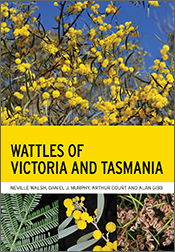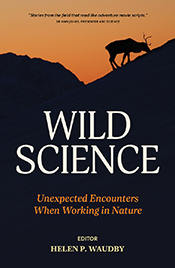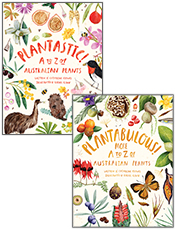Australia's Biodiversity and Climate Change
By: Will Steffen (Lead Author)
Strategic assessment of the vulnerability of Australia's biodiversity to climate change.
Australia's unique biodiversity is under threat from a rapidly changing climate. The effects of climate change are already discernible at all levels of biodiversity – genes, species, communities and ecosystems. Many of Australia's most valued and iconic natural areas – the Great Barrier Reef, south-western Australia, the Kakadu wetlands and the Australian Alps – are among the most vulnerable. But much more is at stake than saving iconic species or ecosystems. Australia's biodiversity is fundamental to the country's national identity, economy and quality of life. + Full description
In the face of uncertainty about specific climate scenarios, ecological and management principles provide a sound basis for maximising opportunities for species to adapt, communities to reorganise and ecosystems to transform while maintaining basic functions critical to human society. This innovative approach to biodiversity conservation under a changing climate leads to new challenges for management, policy development and institutional design. This book explores these challenges, building on a detailed analysis of the interactions between a changing climate and Australia's rich but threatened biodiversity.
Australia's Biodiversity and Climate Change is an important reference for policy makers, researchers, educators, students, journalists, environmental and conservation NGOs, NRM managers, and private landholders with an interest in biodiversity conservation in a rapidly changing world.
- Short descriptionNews
No longer available in a print edition.
Reviews
"… should be read by all students, policy makers, and practitioners grappling with the challenges of conserving Australia’s remarkable biodiversity in the 21st century."
David Freudenberger, Australasian Journal of Environmental Management, 2011
"This highly accessible, well-written, and well-illustrated book, with dozens of color and black-and-white figures, is an excellent resource for students, reporters, policy makers, and conservation professionals in Australia and beyond."
D Flaspohler, Choice, October 2010
Summing Up: Highly recommended. Academic and professional collections, all levels.
"This is an extraordinary compendium of information on biodiversity and climate change in Australia, both for the expert and for those who care but who may not be familiar with all the terms – even common ones such a ‘threatened species’. The authors are key ‘elders’ of the ecological profession and we need to listen to them."
Karen Alexander, Park Watch, June 2010
"…unlike most strategic assessments which can be tediously dull, this one is well written, beautifully illustrated and covers an enormous amount of material. If I was lecturing in an Australian university, I would be using this book as core textbook for courses in ecology and environmental science."
R H Marrs, Biological Conservation 143, June 2010
"The book is a lengthy, detailed and authoritative compendium by several of Australia’s leading researchers…A brief review is never going to do this monumental if not seminal text real justice."
Greg Unwin, Australian Forest Grower, Summer 2010
"Australia’s biodiversity is reviewed in a succinct account, which is a model of its type and, I hope, is destined to become essential background reading for ecology and geography courses."
Paul Adam, Australasian Plant Conservation, Vol 18, March-May 2010
Details
ePDF | December 2009ISBN: 9780643098190
Publisher: CSIRO Publishing
Available from eRetailers
ePUB | December 2009
ISBN: 9780643101821
Publisher: CSIRO Publishing
Available from eRetailers
Features
- Analysis based on fundamental ecological principles, which leads to a reassessment of long-standing conservation goals
- A strong focus on the structure and functioning of ecosystems, rather than on detailed climate scenarios (three stylised scenarios are used in the assessment)
- A continuing focus on dealing with existing stressors on biodiversity, and the interaction of these stressors with climate change
- An integrated set of key messages and policy directions rather than a prioritised list
- An innovative regional approach to conservation, designed in synergy with broad socio-economic trends that are sweeping across Australia
Authors
Will Steffen is Executive Director of the ANU Climate Change Institute at The Australian National University, Canberra, and is also Science Adviser, Department of Climate Change, Australian Government. His research interests span a broad range of climate-related fields, especially on the impacts on terrestrial ecosystem structure and functioning. Will chaired the group that wrote the book.The other authors include:
Andrew A. Burbidge, Wildlife Research Centre, WA Department of Environment and Conservation and private consulting conservation biologist
Lesley Hughes, Department of Biological Sciences, Macquarie University
Roger Kitching, Centre for Innovative Conservation Strategies, Griffith University
David Lindenmayer, The Fenner School for the Environment and Society, Australian National University
Warren Musgrave, Consulting Economist and Emeritus Professor, University of New England
Mark Stafford Smith, Research Scientist, Desert Knowledge Cooperative Research Centre
Patricia A. Werner, The Fenner School for the Environment and Society, Australian National University








